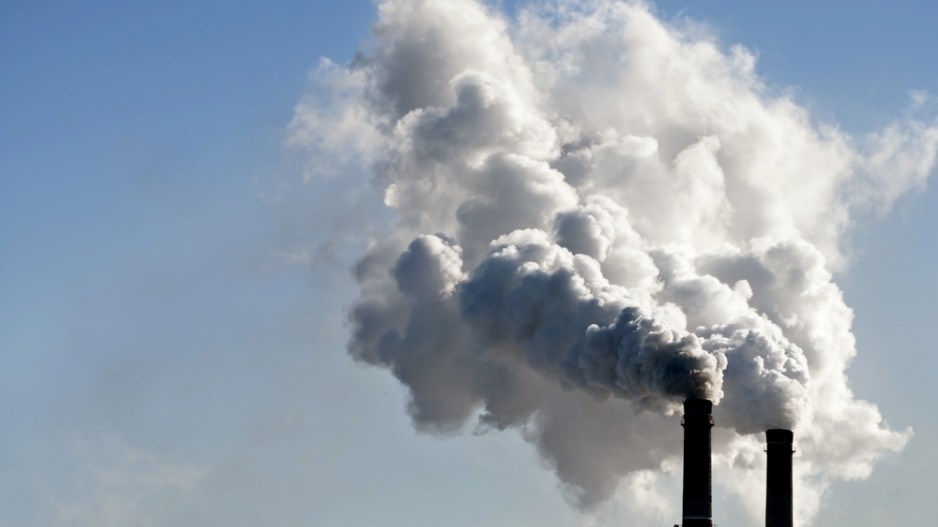As the $36 billion Pacific NorthWest LNG project awaits a yes or no from the Trudeau cabinet, it’s the million-tonne question: will the Prime Minister’s plan to cut Canada's contributions to climate change trip up the project?
New debate is raging over whether the project's hefty greenhouse gas emissions can be justified. Opponents say green-lighting the Prince Rupert-based plant will make it impossible for B.C. and Canada to meet emissions reduction targets. But supporters say "clean burning" B.C. gas will offset oil and coal in Asian nations, making Pacific NorthWest a benefit for the global climate.
A Canadian Environmental Assessment Agency (CEAA) review of the proposal, released in February, has also put new focus on what can be done to reduce emissions from drilling, processing and transporting natural gas.
Running the plant itself would add another 5.28 million tonnes of carbon dioxide (CO2) per year to the atmosphere—an 8.5% increase in total provincial emissions. The majority of Pacific NorthWest's B.C.-based emissions—between 6.5 and 8.7 million tonnes of CO2 per year, or 10 to 14% of the provincial total—would happen in Northeast B.C., where the gas will be sourced. B.C. and federal government reviews of the project have cited emissions as a "significant adverse environmental effect."
Warren Brazier, an energy lawyer with the firm Watson Goepel, says those emissions could be brought down significantly if upstream drilling and processing can be brought onto the BC Hydro grid.
"For B.C., it's unique, and the opportunity is there," he said. "The availability of clean electricity compared to other places around the world is second-to-none for this industry. I think electrifying is a wise way to reduce you emissions. To what extent (they will) is the million-tonne question."
With a few exceptions, gas drilling operations in B.C. burn either their own product or diesel fuel to power their operations, contributing to 17% of the province's overall emissions. The BC Hydro grid, on the other hand, is more than 93% clean or renewable energy.
Brazier, who remains critical of the Site C dam, said electrifying upstream natural gas can be a smart choice for producers. But getting the power to remote drilling sites remains a challenge, and it's not clear whether B.C.'s LNG export window will still be open by the time power lines can be built.
BC Hydro has already completed a power line for drillers and processing plants in the South Peace—the Dawson Creek and Chetwynd Area Transmission line (DCAT), and plans to add to that system within the decade.
Progress Energy, the upstream company supplying gas for Pacific NorthWest LNG, hopes to get on the grid via a 140-kilometre line to its drilling operations north of Fort St. John.
Progress spokesperson Stacie Dley sayidthe company is in "high level" talks with ATCO Power on whether it's feasible to build the line, adding it has not received final approval.
She added that CEAA emissions figures do not take into account possible electrification.
According to ATCO, the project could cut up to a third of emissions from Progress Energy upstream operations—currently pegged at 400,000 tonnes of carbon dioxide a year.
However, Brazier said that without a grid hookup for the plant itself, the ATCO project would be a "drop in the bucket" towards reducing overall emissions.
"It's not enough to have a huge impact on the emissions of the Pacific NorthWest LNG project. I'm not saying they shouldn't do it. But if you're ignoring the downstream and not electrifying as much as you can, there's still a huge amount of emissions that are going to occur at the plant itself."
Other projects, like Woodfibre LNG in Squamish, already have plans to plug into the BC Hydro grid, he added.
The B.C. Liberal government argues LNG will be a net-benefit for the climate, helping Asian nations that rely on coal transition to cleaner burning natural gas. But there are no guarantees LNG will go to offset coal, and it remains to be seen whether the federal government will be swayed by this logic.
The review period for Pacific NorthWest LNG officially ends March 22, but the federal cabinet has no firm deadline for a decision.




